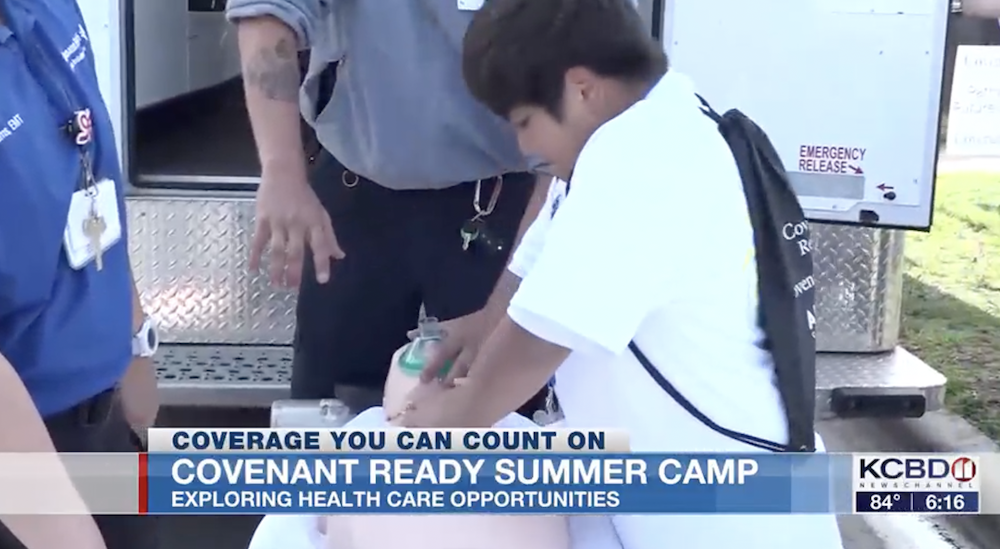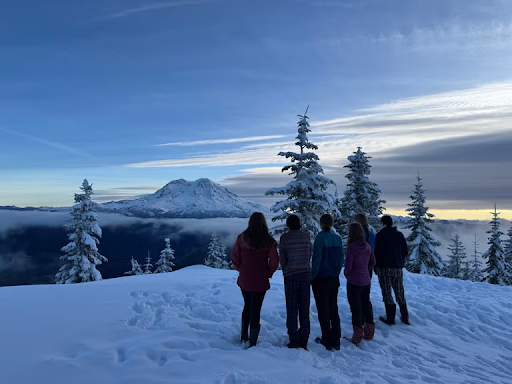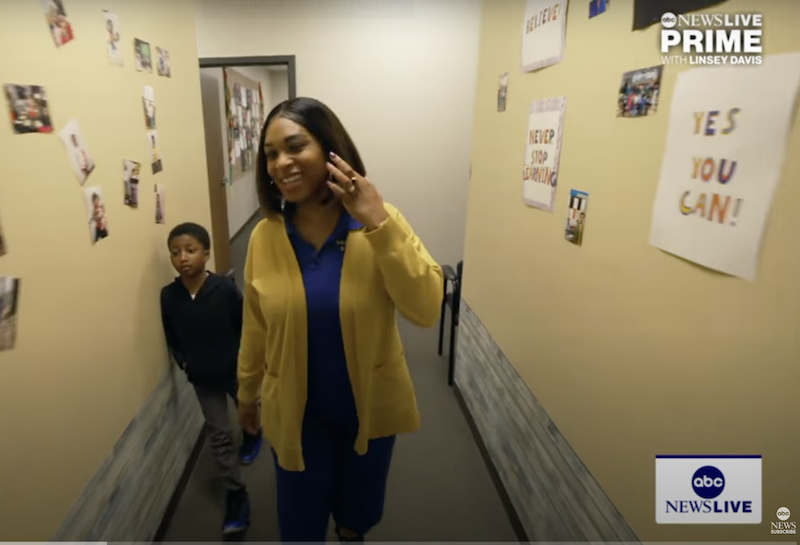Jump to: Top Tasks | From the Field | Key Resources | Moments of Resilience
In week 116 of our new reality, the country finds itself grappling with another unspeakable tragedy: the murder of two teachers and 19 young children by a high school student.
While the details are still emerging, perhaps the only thing everyone–left and right–can agree on is that we have to find a way to make sure this never happens again. How to do that will test our ability to set aside partisan interests and find sensible solutions that puts student and teacher safety first.
One thing we do know for certain is that murderer fits a familar pattern of a student with “a fraught home life” who “lashed out violently against peers and strangers,” according to a report by Robert Klemko, Silvia Foster-Frau and Shawn Boburg for the Washington Post. Over the past two years, he “missed long periods of high school, classmates said, and was not on track to graduate with them this year” and “sought social connections online as in-person friendships with peers complicated and soured.” When talking to girls online, the Washington Post reports,
SUBSCRIBE
“He could be cryptic, demeaning and scary, sending angry messages and photos of guns. If they didn’t respond how he wanted, he sometimes threatened to rape or kidnap them… But they said their reports were ignored.”
We also know that “the peak ages for violent offending with firearms is roughly 18 to 21.” That means that students whose lives were most disrupted during the pandemic-era shutdowns are just entering that period in their lives now. With so many students left angry, frustrated and disconnected by the last three years, we can’t afford to sit by and wait for the next tragedy.
Finally, we know that like many school districts, Uvalde had invested extensive time and money in an effort to strengthen the security of their schools. “It hired two new police officers last year, expanding to a six-person force that serves about 4,000 students across several schools,” write Mike Baker and Dana Goldstein for The New York Times. “The school system’s spending on security and monitoring services more than doubled in the past four years…The district’s security plan included two-way radios, threat-assessment teams at each school, and a policy of locking each classroom door. At Robb Elementary, where the rampage took place on Tuesday, officials described fencing enclosing the campus that was ‘designed to limit and/or restrict access to individuals without a need to be on the campus,’ district records said.”
Tragically, none of it worked. A door was propped open in the back of the school, the school resource officer wasn’t on school grounds and the police who responded waited 78 minutes before moving in to end the killing. The result? Twenty one innocent people lost their lives.
As Andy Rotherham notes, “In our grief and frustration we can’t lose sight that four of five school shooters signal their intentions beforehand. We have insufficient red flag laws, insufficient awareness about the ones that exist, and a too lax culture of firearms responsibility. Our mental health treatments and general societal approach to mental health remains inadequate. All of these issues can be addressed without trampling civil liberties.”
Indeed, as Baker and Goldstein report, our efforts to address the problem without addressing these underlying causes have not worked: “there is little evidence nationally that the dollars poured into school security measures have decreased gun violence in schools.” The truth is no matter how hard we work, we can’t turn our schools into fortresses. We can’t turn our teachers into armed guards. We can and must think differently about reducing the threat—through mental health interventions, red flag laws and much more—before it reaches the schoolhouse door.
50CAN is a bipartisan network of advocates who believe America is a great country that is suffering from a drought of courageous leadership and a toxic political culture that far too often puts working across party lines for the good of our children last. It has never been more true than right now that our young people need us all to be leaders who put their interests above everything else.
Last time in the New Reality Roundup, we looked at the progress being made in career and technical education and the importance of advocates participating in the upcoming elections. This week we spotlight voices from the field and the opportunities for schools to support the mental health of their students.
In week 116 of our new reality, the country finds itself grappling with another unspeakable tragedy: the murder of two teachers and 19 young children by a high school student.
While the details are still emerging, perhaps the only thing everyone–left and right–can agree on is that we have to find a way to make sure this never happens again. How to do that will test our ability to set aside partisan interests and find sensible solutions that puts student and teacher safety first.
One thing we do know for certain is that murderer fits a familar pattern of a student with “a fraught home life” who “lashed out violently against peers and strangers,” according to a report by Robert Klemko, Silvia Foster-Frau and Shawn Boburg for the Washington Post. Over the past two years, he “missed long periods of high school, classmates said, and was not on track to graduate with them this year” and “sought social connections online as in-person friendships with peers complicated and soured.” When talking to girls online, the Washington Post reports, “He could be cryptic, demeaning and scary, sending angry messages and photos of guns. If they didn’t respond how he wanted, he sometimes threatened to rape or kidnap them… But they said their reports were ignored.”
We also know that “the peak ages for violent offending with firearms is roughly 18 to 21.” That means that students whose lives were most disrupted during the pandemic-era shutdowns are just entering that period in their lives now. With so many students left angry, frustrated and disconnected by the last three years, we can’t afford to sit by and wait for the next tragedy.
Finally, we know that like many school districts, Uvalde had invested extensive time and money in an effort to strengthen the security of their schools. “It hired two new police officers last year, expanding to a six-person force that serves about 4,000 students across several schools,” write Mike Baker and Dana Goldstein for The New York Times. “The school system’s spending on security and monitoring services more than doubled in the past four years…The district’s security plan included two-way radios, threat-assessment teams at each school, and a policy of locking each classroom door. At Robb Elementary, where the rampage took place on Tuesday, officials described fencing enclosing the campus that was ‘designed to limit and/or restrict access to individuals without a need to be on the campus,’ district records said.”
Tragically, none of it worked. A door was propped open in the back of the school, the school resource officer wasn’t on school grounds and the police who responded waited 78 minutes before moving in to end the killing. The result? Twenty one innocent people lost their lives.
As Andy Rotherham notes, “In our grief and frustration we can’t lose sight that four of five school shooters signal their intentions beforehand. We have insufficient red flag laws, insufficient awareness about the ones that exist, and a too lax culture of firearms responsibility. Our mental health treatments and general societal approach to mental health remains inadequate. All of these issues can be addressed without trampling civil liberties.”
Indeed, as Baker and Goldstein report, our efforts to address the problem without addressing these underlying causes have not worked: “there is little evidence nationally that the dollars poured into school security measures have decreased gun violence in schools.” The truth is no matter how hard we work, we can’t turn our schools into fortresses. We can’t turn our teachers into armed guards. We can and must think differently about reducing the threat—through mental health interventions, red flag laws and much more—before it reaches the schoolhouse door.
50CAN is a bipartisan network of advocates who believe America is a great country that is suffering from a drought of courageous leadership and a toxic political culture that far too often puts working across party lines for the good of our children last. It has never been more true than right now that our young people need us all to be leaders who put their interests above everything else.
Last time in the New Reality Roundup, we looked at the progress being made in career and technical education and the importance of advocates participating in the upcoming elections. This week we spotlight voices from the field and the opportunities for schools to support the mental health of their students.
TOP TASKS
Speak out for kids
The Executive Directors of the western states in the 50CAN network have had their own poignant reactions as they’ve grappled with the violence of last week. They offer their words here in the beginning of a conversation, and welcome replies to this email that we’ll share directly with them:
“Like many of you, I find myself heartbroken and angry at the events in Texas. I was devastated to see the pictures of our babies taken too soon. I am angry that this continues to happen and that schools continue to not be places where we can trust our children will be safe and loved. Families consistently tell us they want two things from their children’s education: they want their kids to be safe and they want their children to grow. Right now, it’s clear we are not meeting either of those hopes. Too often students, particularly Latino, Black and working class students are being dropped off at schools where they are not learning, not being supported and are not safe. They are not safe from bullies, from low expectations and they are not safe from senseless carnage. We know how to change that reality for kids across the country and we have chosen to do nothing. It’s time we realize that none of this is normal.”
–Nicholas Martinez, Executive Director, Transform Education Now
“I am heartbroken and furious. Six years ago, I entered the world of education advocacy and I find myself stricken at the fact that none of my work matters if we cannot keep students safe at school. While I spend my working hours concerned about accountability, standards, and a quality education system that sets students on a path for success–I struggle to prioritize any of those issues over the issue of safety in this moment. Now is the time for a bipartisan coalition to come together to enact gun control policies that will give our students their best chance at success and more importantly, survival.”
–Amanda Aragon, Executive Director, NewMexicoKidsCAN
“As the husband of a teacher and father of a one-year-old, the news of the recent shooting at Robb Elementary School in Uvalde hit me especially hard. School shouldn’t be a place of fear and uncertainty, where our children and loved ones go off to one morning and never come home. I can’t imagine the pain felt by the families and the broader community after this unspeakable tragedy, and given the stressors of the past several years, I know this tragedy has hit especially hard for parents, teachers, and students. There are resources available on how to talk about school shootings with kids and process what has happened, as well as advocacy organizations that are pushing for change through policy. As an advocate, I know that real change requires holding our elected officials accountable, speaking out against special interests, and supporting candidates that prioritize the physical and mental health and safety of our children.”
–David Miyashiro, Executive Director, HawaiiKidsCAN
Deploy resources now to support students’ mental health
Violence can not always be predicted or prevented. Yet as Washington holds necessary conversations over the coming weeks on where lines are drawn between safety and liberty in our nation, educators and advocates have the immediate responsibility to do everything we can to address students’ mental health and wellbeing. The Safe and Sound Schools organization, founded by the parents of the victims of Sandy Hook, identifies building mental health supports for students as the first step in their school safety roadmap.
Against the backdrop of three years of disrupted routines, the state of student mental health is alarming. We’ve highlighted the need for solutions and spending of ESSER funds repeatedly, including one year and one month ago. A recent CDC report stated that 37% of students reported regular mental health struggles during the pandemic. The World Health organization found a 25% increase in anxiety year-over-year, causing one doctor to remark: “We truly are not just in a Covid-19 pandemic but a behavioral health pandemic as well.”
Solutions begin with listening to our children, who are all aware of the crisis, with members of Generation Z voicing the mental health struggles of their generation in the Wall Street Journal and NPR.
Brookings Institute suggests a number of immediate solutions that schools can take on, the most prominent of which is to ensure that students feel cared for and that they matter: “Students who feel like they matter—that they are important or significant to others—are less likely to feel isolated, ostracized, and alone. They feel confident that there are people to whom they can turn for support.”
THE TASK OF THE WEEK IS
FROM THE FIELD
Last Tuesday, primary elections were held throughout the state of Georgia. In the 14 highly-competitive primary races where GeorgiaCAN Action engaged, thirteen candidates won outright or advanced. With a near sweep by choice-minded candidates, last week’s elections confirmed polling conducted earlier this year by GeorgiaCAN that found robust support for parents being able to select the school of their choice.
JerseyCAN partnered with Curriculum Associates to release statewide results of the i-Ready assessments, with the troubling finding that following the Covid-19 pandemic, the majority of K-8 students are between one and three years behind. That’s one of several challenges in the Garden State that will be considered by the members of JerseyCAN’s new Parent Champions for Strong Schools fellowship, which will equip parents with the skills and resources to advocate for change in their districts. Applications for the fellowship are open now.
Key Resources
A new policy brief from Urban Institute warns that inflation could put more children at risk of food insecurity this summer.
Chalkbeat is holding an event on June 8th on “What our schools need next to support student mental health.”
CRPE published a case study on a microschool model designed to uplift Black communities in Florida.
In a new report for Brookings Institution, Richard Reeves and Beyond Deng explore the role of social networks and social capital in boosting educational opportunity.
On May 13, the Harvard Kennedy School hosted a panel discussion on what can be done about school shootings.
Moment of Resilience

Students across the country walked out last week from both K-12 schools and colleges to protest a lack of action on school shootings. The walkouts, which involved thousands of students, were organized by advocacy group Students Demand Action. In Falls Church, VA, students staged a “die in” on the school football field, in a powerful reminder of a message that Vermont 17-year old Maddie Ahmadi told NBC News: “Students across the country are realizing this could happen to any of us.”







